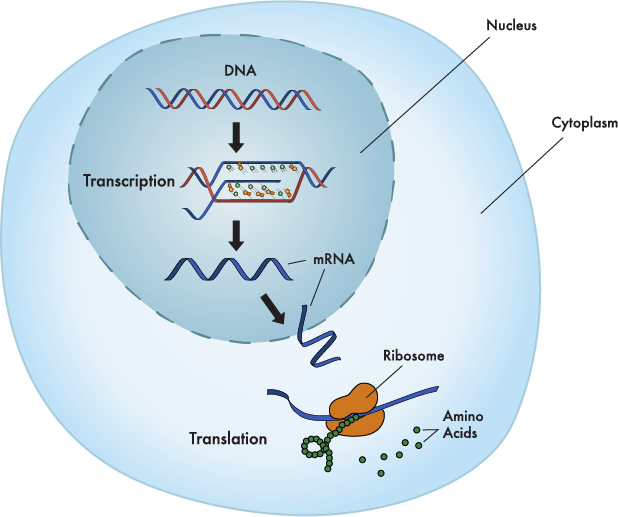Once the daughter cells receive the new copy of DNA, the DNA can do its job to initiate protein synthesis (Figure 8). First, it is transcribed to messenger RNA inside the nucleus, which is the key step in “turning on or off” the gene’s function. The mRNA then leaves the nucleus through pores in the nuclear membrane, enter-ing the cytoplasm. Once in the cytoplasm the mRNA is translated with the help of transfer RNA (tRNA) to build a protein. The ribosomes in the cytoplasm act as a “shuttle bus system” to travel along the mRNA, picking up tRNA that is bound to a specific amino acid as it goes along. The 3 letter mRNA code tells the tRNA which amino acid to bring over to the mRNA. Each tRNA then releases its amino acid to form a string, and eventually, when the mRNA code says “stop”, the amino acid chain is released, and it folds up into a protein.
